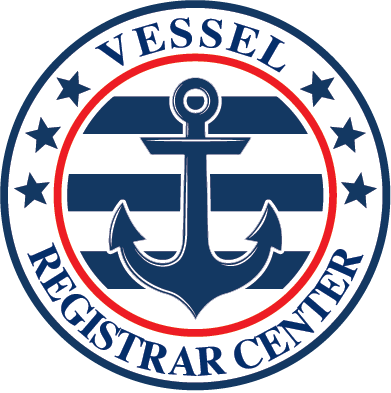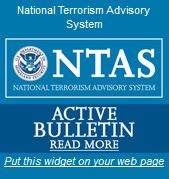173.1 Purpose; preemptive effect.
This part prescribes requirements for numbering vessels and for reporting casualties and accidents to implement sections 6101, 6102, 12301, and 12302 of Title 46, United States Code. The regulations in subparts A, B, and D of this part have preemptive effect over conflicting State or local regulation. The regulations in subpart C of this part have preemptive effect over State or local regulation within the same field, except to the extent that Congress requires the Coast Guard to allow State casualty reporting systems pursuant to 46 U.S.C. chapter 131.
[USCG-2003-14963, 77 FR 18699, Mar. 28, 2012]
173.3 Definitions.
As used in this part –
Airboat means a vessel that is typically flat-bottomed and propelled by an aircraft-type propeller powered by an engine.
Auxiliary sail means a vessel with sail as its primary method of propulsion and mechanical propulsion as its secondary method.
Cabin motorboat means a vessel propelled by propulsion machinery and providing enclosed spaces inside its structure.
Certificate of number means the certificate required by § 173.21 of this part.
Houseboat means a motorized vessel that is usually non-planing and designed primarily for multi-purpose accommodation spaces with low freeboard and little or no foredeck or cockpit.
Hull identification number or HIN means a number required by 33 CFR 181.23.
Inboard, in the context of an engine, means an engine mounted inside the confines of a vessel which powers a drive shaft that turns a water jet impeller or that runs through the bottom of the hull and is attached to a propeller at the other end.
Inflatable boat means a vessel that uses air-filled flexible fabric for buoyancy.
Issuing authority means a State listed in Appendix A of this part as having a numbering system approved by the Coast Guard or the Coast Guard itself when a State numbering system has not been approved.
Open motorboat means a vessel equipped with propulsion machinery and having an open load carrying area that does not have a continuous deck to protect it from the entry of water.
Operate means use, navigate, or employ.
Operator means the person who is in control or in charge of a vessel while it is in operation.
Outboard, in the context of an engine, means an engine with propeller or water jet integrally attached, which is usually mounted at the stern of a vessel.
Owner means a person, other than a secured party, having property rights in or title to a vessel, including persons entitled to use or possess a vessel subject to a security interest in another person, but excluding lessees under a lease not intended as security.
Paddlecraft means a vessel powered only by its occupants, using a single or double- bladed paddle as a lever without the aid of a fulcrum provided by oarlocks, thole pins, crutches, or similar arrangements.
Person means an individual, firm, partnership, corporation, company, association, joint-stock association, or governmental entity and includes a trustee, receiver, assignee, or similar representative of any of them.
Personal watercraft means a vessel propelled by a water-jet pump or other machinery as its primary source of motive power and designed to be operated by a person sitting, standing, or kneeling on the vessel, rather than sitting or standing within the vessel’s hull.
Pod drive means an engine mounted in front of the transom of a vessel and attached through the bottom of the hull to a steerable propulsion unit.
Pontoon boat means a vessel with a broad, flat deck that is affixed on top of closed cylinders which are used for buoyancy, the basic design of which is usually implemented with two rows of floats as a catamaran or with three rows of floats as a trimaran.
Reporting authority means a State listed in Appendix A of this part as having a numbering system approved by the Coast Guard or the Coast Guard itself when a numbering system has not been approved.
Rowboat means an open vessel manually propelled by oars.
Sail only means a vessel propelled only by sails.
State means a State of the United States, the District of Columbia, American Samoa, Guam, the Commonwealth of the Northern Mariana Islands, Puerto Rico, the U.S. Virgin Islands, and any other territory or possession of the United States.
State of principal operation means the State in whose waters a vessel is or will be operated most during a calendar year.
Sterndrive means an engine, powering a propeller through a series of shafts and gears, mounted in front of the transom of a vessel and attached through the transom to a drive unit that is similar to the lower unit of an outboard; and may also be known as an inboard-outdrive or an inboard-outboard.
Vessel means every description of watercraft or other artificial contrivance used or capable of being used as a means of transportation on water.
[USCG-2003-14963, 77 FR 18699, Mar. 28, 2012]
173.11 Applicability.
This subpart applies to each vessel equipped with propulsion machinery of any type used on waters subject to the jurisdiction of the United States and on the high seas beyond the territorial seas for vessels owned in the United States except:
- Foreign vessels temporarily using waters subject to U.S. jurisdiction;
- Military or public vessels of the United States, except recreational-type public vessels;
- A vessel whose owner is a State or subdivision thereof, which is used principally for governmental purposes, and which is clearly identifiable as such;
- Ships’ lifeboats;
- A vessel which has or is required to have a valid marine document as a vessel of the United States.
173.13 Exemptions.
Where the Coast Guard issues numbers, the following classes of vessels are exempt, under Section 12303 of Title 46, United States Code, from the numbering provisions of Sections 12301 and 12302 of Title 46, United States Code, and this part:
- A vessel that is used exclusively for racing.
- A vessel equipped with propulsion machinery of less than 10 horsepower that:
- Is owned by the owner of a vessel for which a valid certificate of number has been issued;
- Displays the number of that numbered vessel followed by the suffix “1” in the manner prescribed in § 173.27; and
- Is used as a tender for direct transportation between that vessel and the shore and for no other purpose.
173.15 Vessel number required.
- Except as provided in § 173.17, no person may use a vessel to which this part applies unless:
- It has a number issued on a certificate of number by the issuing authority in the State of principal operation; and
- The number is displayed as described in § 173.27.
- This section does not apply to a vessel for which a valid temporary certificate has been issued to its owner by the issuing authority in the State of principal operation.
[CGD 72-54R, 37 FR 21399, Oct. 7, 1972, as amended by USCG-2003-14963, 77 FR 18699, Mar. 28, 2012]
173.17 Reciprocity.
- Section 12302(c) of Title 46, United States Code, states:
When a vessel is numbered in a State, it is deemed in compliance with the numbering system of a State in which it temporarily is operated.
- Section 12302(d) of Title 46, United States Code, states:
When a vessel is removed to a new State of principal operation, the issuing authority of that State shall recognize the validity of the number issued by the original State for 60 days.
[CGD 89-048, 54 FR 27002, June 27, 1989]
173.19 Other numbers prohibited.
No person may operate a vessel to which this part applies that has any number that is not issued by an issuing authority for that vessel on its forward half.
[CGD 72-54R, 37 FR 21399, Oct. 7, 1972, as amended by USCG-2003-14963, 77 FR 18699, Mar. 28, 2012]
173.21 Certificate of number required.
- Except as provided in §§ 173.13 and 173.17, no person may operate a vessel to which this part applies unless it has on board:
- A valid certificate of number or temporary certificate for that vessel issued by the issuing authority in the State in which the vessel is principally operated; or
- For the vessel described in paragraph (b) of this section, a copy of the lease or rental agreement, signed by the owner or his or her authorized representative and by the person leasing or renting the vessel, that contains at least:
- The vessel number that appears on the certificate of number; and
- The period of time for which the vessel is leased or rented.
- Section 12304(a) of Title 46, United States Code, states in part: The certificate of number for a vessel less than 26 feet in length and leased or rented to another for the latter’s noncommercial operation of less than 7 days may be retained on shore by the vessel’s owner or representative at the place from which the vessel departs or returns to the possession of the owner or the owner’s representative.
[CGD 72-54R, 37 FR 21399, Oct. 7, 1972, as amended by CGD 77-117A, 43 FR 17941, Apr. 27, 1978; CGD 89-048, 54 FR 27002, June 27, 1989; USCG-2003-15404, 68 FR 37742, June 25, 2003; USCG-2003-14963, 77 FR 18699, Mar. 28, 2012]
173.23 Inspection of certificate.
Each person operating a vessel to which this part applies shall present the certificate or lease or rental agreement required by § 173.21 to any Federal, State, or local law enforcement officer for inspection at his or her request.
[CGD 72-54R, 37 FR 21399, Oct. 7, 1972, as amended by USCG-2003-15404, 68 FR 37742, June 25, 2003; USCG-2003-14963, 77 FR 18700, Mar. 28, 2012]
173.25 Location of certificate of number.
No person may operate a vessel to which this part applies unless the certificate or lease or rental agreement required by § 173.21 is carried on board in such a manner that it can be handed to a person authorized under § 173.23 to inspect it.
[CGD 72-54R, 37 FR 21399, Oct. 7, 1972, as amended by USCG-2003-14963, 77 FR 18700, Mar. 28, 2012]
173.27 Numbers: Display; size; color.
- Each number required by § 173.15 must:
- Be painted on or permanently attached to each side of the forward half of the vessel except as allowed by paragraph (b) or required by paragraph (c) of this section;
- Be in plain vertical block characters of not less than 3 inches in height;
- Contrast with the color of the background and be distinctly visible and legible;
- Have spaces or hyphens that are equal to the width of a letter other than “I” or a number other than “1” between the letter and number groupings (Example: DC 5678 EF or DC-5678-EF); and
- Read from left to right.
- When a vessel is used by a manufacturer or by a dealer for testing or demonstrating, the number may be painted on or attached to removable plates that are temporarily but firmly attached to each side of the forward half of the vessel.
- On vessels so configured that a number on the hull or superstructure would not be easily visible, the number must be painted on or attached to a backing plate that is attached to the forward half of the vessel so that the number is visible from each side of the vessel.
- Each number displayed on a tender exempted under § 173.13 must meet the requirements of paragraph (a) of this section and have a space or hyphen that is equal to the width of a letter other than “I” or a number other than “1” between the suffix and the number. (Example: DC 5678 EF 1 or DC-5678-EF-1.)
173.29 Notification to issuing authority.
A person whose name appears as the owner of a vessel on a certificate of number shall, within 15 days, notify the issuing authority in a manner prescribed by the issuing authority of:
- Any change in his or her address;
- The theft or recovery of the vessel;
- The loss or destruction of a valid certificate of number;
- The transfer of all or part of his or her interest in the vessel; and
- The destruction or abandonment of the vessel.
[CGD 72-54R, 37 FR 21399, Oct. 7, 1972, as amended by USCG-2003-15404, 68 FR 37742, June 25, 2003]
173.31 Surrender of certificate of number.
A person whose name appears as the owner of a vessel on a certificate of number shall surrender the certificate in a manner prescribed by the issuing authority within 15 days after it becomes invalid under paragraph (b), (c), (d), or (e) of § 173.77.
173.33 Removal of number.
The person whose name appears on a certificate of number as the owner of a vessel shall remove the number and validation sticker from the vessel when:
- The vessel is documented by the Coast Guard;
- The certificate of number is invalid under paragraph (c) of § 173.77; or
- The vessel is no longer principally operated in the State where the certificate was issued.
[CGD 72-54R, 37 FR 21399, Oct. 7, 1972, as amended by USCG-2003-14963, 77 FR 18700, Mar. 28, 2012]
173.35 Coast Guard validation sticker.
No person may operate a vessel except a vessel exempted in § 173.13 that has a number issued by the Coast Guard unless it has the validation sticker issued with the certificate of number displayed within 6 inches of the number.
[CGD 72-54R, 37 FR 21399, Oct. 7, 1972, as amended by USCG-2003-14963, 77 FR 18700, Mar. 28, 2012]
173.51 Applicability.
- This subpart applies to each vessel operated on waters subject to the jurisdiction of the United States and on the high seas beyond the territorial seas for vessels owned in the United States that:
- Is operated by its operator for recreational purposes; or
- Is required to be numbered under this part.
- This subpart does not apply to a vessel subject to inspection under Title 46 U.S.C. Chapter 33.
[CDG 72-54R, 37 FR 21399, Oct. 7, 1972, as amended by CDG 84-099, 52 FR 47533, Dec. 14, 1987; USCG-2003-14963, 77 FR 18700, Mar. 28, 2012]
173.53 Immediate notification of death or disappearance.
- When, as a result of an occurrence that involves a vessel or its equipment, a person dies or disappears from a vessel, the operator shall, without delay, by the quickest means available, notify the nearest reporting authority listed in appendix A of this part of:
- The date, time, and exact location of the occurrence;
- The name of each person who died or disappeared;
- The number and name of the vessel; and
- The names and addresses of the owner and operator.
- When the operator of a vessel cannot give the notice required by paragraph (a) of this section, each person on board the vessel shall notify the casualty reporting authority or determine that the notice has been given.
117.369 Satilla River.
The draw of the Seaboard System Railroad bridge, mile 25.7 at Woodbine, shall open on signal if at least 24 hours notice is given.
117.371 Savannah River.
- The draw of the Houlihan bridge (US 17) mile 21.6 at Savannah shall open on signal if at least three hours advance notice is given to the Georgia Department of Transportation Area Engineer in Savannah.
- The draw of the Seaboard System Railroad bridge, mile 27.4 near Hardeeville, South Carolina shall open on a signal if at least three hours advance notice is given. VHF radiotelephone communications will be maintained at the railroad’s chief dispatcher’s office in Savannah.
- The draw of the CSX Transportation railroad bridge, mile 60.9, near Clyo, Georgia, shall open on signal if at least 48 hours advance notice is given. Openings can be arranged by contacting CSX Transportation on Channel 16 VHF or by telephone at 1 800 232-0146. VHF radiotelephone communications will be maintained at the dispatcher’s office in Savannah, Georgia.
- The draw of the Seaboard System Railroad bridge, mile 195.4 near Augusta, shall open on signal if at least three hours notice is given.
[CGD7-84-21, 49 FR 43955, Nov. 1, 1984, as amended by CGD7-84-01, 50 FR 25073, June 17, 1985; CGD7-87-45, 53 FR 4394, Feb. 16, 1988; CGD7-90-08, 56 FR 16008, Apr. 19, 1991]
117.373 St. Marys River.
See § 117.329, St. Marys River, listed under Florida.
[CGD 92-015, 57 FR 37880, Aug. 21, 1992]
173.71 Application for and issuance of certificate of number.
- The owner of a vessel to which § 173.11 of this part applies and for which a certificate of number is required may apply for that certificate to the issuing authority for the vessel’s State of principal operation listed in Appendix A of this part. The application must be made in the manner specified by the issuing authority and must be accompanied by payment of any fee required by the issuing authority.
- Upon determination that the owner’s application for a certificate of number complies with the requirements of paragraph (a) of this section, the issuing authority may issue a certificate of number.
- A duplicate certificate of number may be applied for and issued as provided by paragraphs (a) and (b) of this section upon the owner’s statement that the original certificate is lost or destroyed.
[USCG-2003-14963, 77 FR 18700, Mar. 28, 2012]
173.71 Application for and issuance of certificate of number.
- The owner of a vessel to which § 173.11 of this part applies and for which a certificate of number is required may apply for that certificate to the issuing authority for the vessel’s State of principal operation listed in Appendix A of this part. The application must be made in the manner specified by the issuing authority and must be accompanied by payment of any fee required by the issuing authority.
- Upon determination that the owner’s application for a certificate of number complies with the requirements of paragraph (a) of this section, the issuing authority may issue a certificate of number.
- A duplicate certificate of number may be applied for and issued as provided by paragraphs (a) and (b) of this section upon the owner’s statement that the original certificate is lost or destroyed.
[USCG-2003-14963, 77 FR 18700, Mar. 28, 2012]
173.75 Temporary certificate.
A temporary certificate valid for not more than 60 days after it is issued may be issued by an issuing authority pending the issue of a certificate of number. A temporary certificate is not valid after the date that the owner receives the certificate of number from the issuing authority.
173.77 Validity of certificate of number.
- Except as provided in paragraphs (b), (c), (d), and (e) of this section, a certificate of number is valid until the date of expiration prescribed by the issuing authority.
- A certificate of number issued by an issuing authority is invalid after the date upon which:
- The vessel is documented or required to be documented under Part 67 of Title 46, Code of Federal Regulations;
- The person whose name appears on the certificate of number as owner of the vessel transfer all of his or her ownership in the vessel; orThe vessel is destroyed or abandoned.
- A certificate of number issued by an issuing authority is invalid if:
- The application for the certificate of number contains a false or fraudulent statement; or
- The fees for the issuance of the certificate of number are not paid.
- A certificate of number is invalid 60 days after the day on which the vessel is no longer principally operated in the State where the certificate was issued.
- The certificate of number is invalid when the person whose name appears on the certificate involuntarily loses his or her interest in the numbered vessel by legal process.
[CGD 72-54R, 37 FR 21399, Oct. 7, 1972, as amended by USCG-2003-15404, 68 FR 37742, June 25, 2003; USCG-2003-14963, 77 FR 18701, Mar. 28, 2012]
173.79 Expiration of Coast Guard certificate of number.
A certificate of number issued by the Coast Guard expires 3 years from the date it is issued.
173.81 Coast Guard forms for numbering and casualty reporting.
- In a State where the Coast Guard is the issuing authority, the following Coast Guard forms must be used:
- Each application for a certificate of number or renewal must be made on two-part Form CG-3876 and 3876A, Application for Number and Temporary Certificate.
- Each notification required by § 173.29(b) must be made on Form CG-2921, Notification of Change in Status of Vessel.
- Each notification required by § 173.29(a) must be made on Form CG-3920, Change of Address Notice.
- Each notification required by § 173.29(c) must be made in writing.
- Each application for a duplicate certificate of number must be made on two-part Form CG-3919 and CG-3919A, Application for Duplicate Certificate of Number and Temporary Duplicate Certificate.
- Each vessel casualty required to be reported by § 173.55 must be made on Form CG-3865.
- Each surrender of a certificate of number required by § 173.31 may be made in any form but must contain a written statement as to why the certificate is being surrendered.
173.83 Availability of Coast Guard forms.
In a State where the Coast Guard is the issuing authority, forms required by § 173.81 are available at all manned Coast Guard shore units, except light and loran stations and except for Form CG-3865, at all first- and second-class and some third- and fourth-class post offices.
173.85 Fees levied by the Coast Guard.
- In a State where the Coast Guard is the issuing authority, the fees for issuing certificates of number are:
- Original or transferred certificate of number and two validation stickers – $24.
- Renewed certificate of number and two validation stickers – $16.
- Duplicate certificate of number – $9.
- Replacement of lost or destroyed validation stickers – $9.
- Fees are payable by check or money-order made payable to the “U.S. Coast Guard”; by major credit card (MasterCard or Visa); or, when the owner applies in person, in cash.
[USCG-1998-3386, 64 FR 36243, July 6, 1999]
- The State is the issuing authority and reporting authority in:
- Alabama – AL.
- Alaska – AK.
- American Samoa – AS.
- Arizona – AZ.
- Arkansas – AR.
- California – CF.
- Colorado – CL.
- Connecticut – CT.
- Delaware – DL.
- District of Columbia – DC.
- Florida – FL.
- Georgia – GA.
- Guam – GU.
- Hawaii – HA.
- Idaho – ID.
- Illinois – IL.
- Indiana – IN.
- Iowa – IA.
- Kansas – KA.
- Kentucky – KY.
- Louisiana – LA.
- Maine – ME.
- Maryland – MD.
- Massachusetts – MS.
- Michigan – MC.
- Minnesota – MN.
- Mississippi – MI.
- Missouri – MO.
- Montana – MT.
- Nebraska – NB.
- Nevada – NV.
- New Hampshire – NH.
- New Jersey – NJ.
- New Mexico – NM.
- New York – NY.
- North Carolina – NC.
- North Dakota – ND.
- Northern Mariana Islands – CM.
- Ohio – OH.
- Oklahoma – OK.
- Oregon – OR.
- Pennsylvania – PA.
- Puerto Rico – PR.
- Rhode Island – RI.
- South Carolina – SC.
- South Dakota – SD.
- Tennessee – TN.
- Texas – TX.
- Utah – UT.
- Vermont – VT.
- Virginia – VA.
- Virgin Islands – VI.
- Washington – WN.
- West Virginia – WV.
- Wisconsin – WS.
- Wyoming – WY.
- The Coast Guard is the issuing authority and reporting authority in:
- The abbreviations following the names of the State listed in paragraphs (a) and (b) are the two capital letters that must be used in the number format to denote the State of principal operation as prescribed in § 174.23 of this chapter.
[CGD 72-54R, 37 FR 21399, Oct. 7, 1972, as amended by CGD 76-076, 41 FR 23401, June 10, 1976; CGD 89-048, 54 FR 27002, June 27, 1989; USCG-2001-9286, 66 FR 33642, June 25, 2001; USCG-2003-14963, 77 FR 18701, Mar. 28, 2012]




